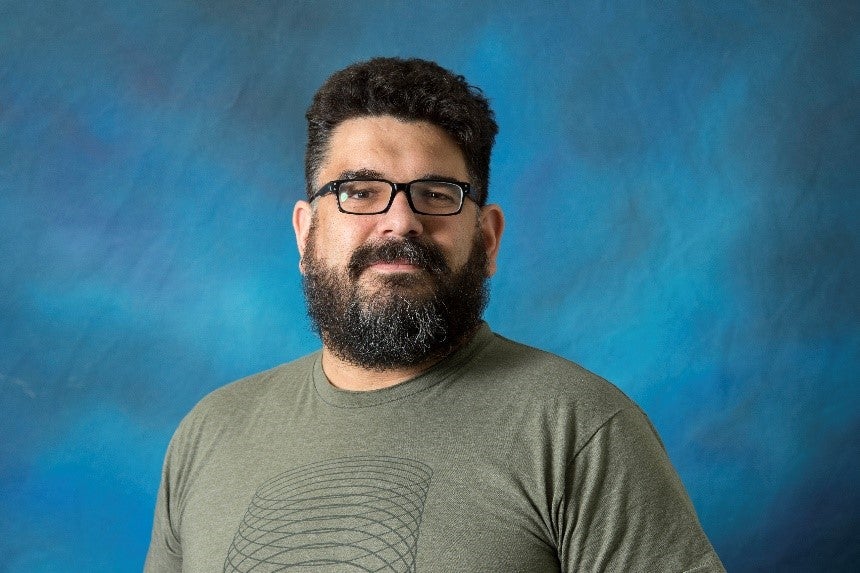Message from the Chair

As I write this message, we reflect on the past term, which just came to a close. From a big picture perspective, the academic calendar appears to be periodic, oscillating regularly through the seasons and semesters like a frictionless pendulum. Zooming in, however, we see that each semester is unique and our departmental trajectory continually traces out a fresh path.
In fact, our path over the last few months featured a variety of exciting new directions. The recent explosion in neural data collection and computing power has opened doors to revolutionary insights about one of science's most challenging frontiers: the brain. With these expanded capabilities comes an urgent need for interdisciplinary, theoretical efforts to understand mechanisms of neural computation. At the forefront of such efforts, Professor Brent Doiron has received major new funding to support his work with experimental partners to explore the cortical computing performed by the visual system.
Traditionally, it has been our mathematical research efforts that bring funding to the department. In an exciting new twist, Professor Armin Schikorra has received funding from multiple sources for his pioneering work in the classroom. Together with Professor Tom Everest (’09, ’13), Schikorra has developed a "flipped" approach to calculus involving a mixture of instructional videos and active classroom practices. Research has highlighted the potential of similar approaches to help some students, yet others prefer traditional instruction. Drs. Schikorra and Everest will be collecting data from their students to develop a new understanding of how to match different types of learners with the forms of instruction that best suit their learning styles.
Our trajectory has featured a variety of new opportunities for students not just inside the classroom but outside of it as well. We were very happy to welcome back four alumni for a Homecoming Alumni Career Panel in October. These enthusiastic presenters described the diverse career paths that they pursued after graduation and provided our current students with an understanding of the myriad of directions available to mathematics graduates. The breadth of opportunities has expanded recently with the spread of data analytics across industry and society, and Professor Jeff Wheeler brought in two very interesting speakers, Dan Fox from the Pittsburgh Pirates and Sam Ventura from the Pittsburgh Penguins, to help students appreciate the burgeoning role of data in sports. And, although we are happy to count many women among our alumni and current students, unfortunately the national trend continues to demonstrate that women are underrepresented in mathematics. We are pleased to share that our department has now joined the Association for Women in Mathematics, which will provide a variety of new opportunities for our female students.
You can read about all of these developments and several more in this semester's issue of BY THE NUMB3RS. Meanwhile, we'll be excitedly looking to the path ahead to see where it takes us over the winter and spring, and we'll be sure to keep you updated about what we find!
Professor Jonathan Rubin, PhD
Chair, University of Pittsburgh, Department of Mathematics
Funding News

The BRAIN Initiative has awarded $16.75 million to a team of neuroscientists that includes Professor Brent Doiron. The team is charged with deciphering the primary visual cortex, a few hundred million brain cells that play a key role in making sense of what the eye sees. This region is part of the brain’s cerebral cortex, the wrinkly outer layer of the mammalian brain responsible for our most sophisticated activities—our faculty of thought. Understanding the brain’s visual system thus represents a crucial step toward understanding how the brain itself gives rise to its most complex capabilities.
This five-year award, administered by the National Institutes of Health, will support a cross-disciplinary effort that brings together theoretical neuroscientists, who develop mathematical models of the brain and experimental neuroscientists, who study the brain directly. This world-class consortium of scientists includes groups from across Columbia University, Berkeley, the University of California at San Francisco, Caltech, and the University of Pittsburgh. The team hopes their work can serve as a paradigm for mapping other brain structures, thus bringing us closer to a true, detailed understanding of the brain.
This new funding is one of just 11 awards to universities nationwide given by the BRAIN Initiative’s Team-Research BRAIN Circuit U19 program, created to fund exceptional teams addressing major questions in neuroscience.
Dr. Doiron, along with collaborators Matthew Smith (Pitt Ophthalmology) and Byron Yu (CMU Bio and Computer Engineering) has received a three-year Brain Initiative grant from the NIH totaling $1.2 million. The goal of the project is to bring together neuronal recordings and neural network modeling to understand brain function. Neuronal recordings can inform the development of network models, and network models can in turn provide predictions for subsequent experiments. Traditionally, neuronal recordings and network models have been related using simple statistical approaches that focus on single or pairs of neurons. Our project will relate neuronal recordings in the visual system and network models using the full multi-dimensional structure of neuronal population activity, as identified using modern dimensionality reduction techniques. The project aim is to establish dimensionality reduction as a fertile ground for incisive comparisons and tight interplay between neuronal recordings and network models.